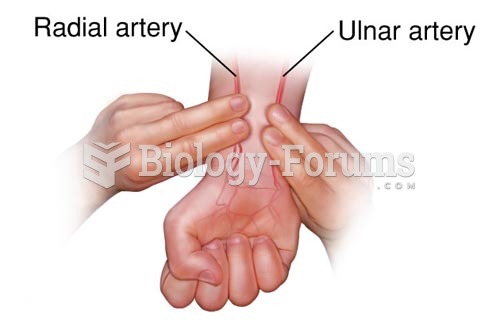|
|
|
Asthma-like symptoms were first recorded about 3,500 years ago in Egypt. The first manuscript specifically written about asthma was in the year 1190, describing a condition characterized by sudden breathlessness. The treatments listed in this manuscript include chicken soup, herbs, and sexual abstinence.
Always store hazardous household chemicals in their original containers out of reach of children. These include bleach, paint, strippers and products containing turpentine, garden chemicals, oven cleaners, fondue fuels, nail polish, and nail polish remover.
Nearly 31 million adults in America have a total cholesterol level that is more than 240 mg per dL.
The first oral chemotherapy drug for colon cancer was approved by FDA in 2001.
There are 20 feet of blood vessels in each square inch of human skin.






